...
| Introducedin | ||
|---|---|---|
|
...
|
Starting in version 7.1
...
of
...
ExcelWriter,
...
you
...
can
...
use
...
...
...
...
...
to
...
display
...
flat
...
data
...
in
...
a
...
grouped
...
and
...
nested
...
format
...
using
...
the
...
ExcelTemplate
...
object.
...
Code
...
Sample:
...
Creating
...
a
...
Grouping
...
and
...
Nested
...
Spreadsheet
...
[
...
...
]
Screenshots from the sample are used below.
How to create a template spreadsheet with grouping functionality
- In Microsoft Excel, open an Office Open XML (.xlsx) spreadsheet to use as a template.
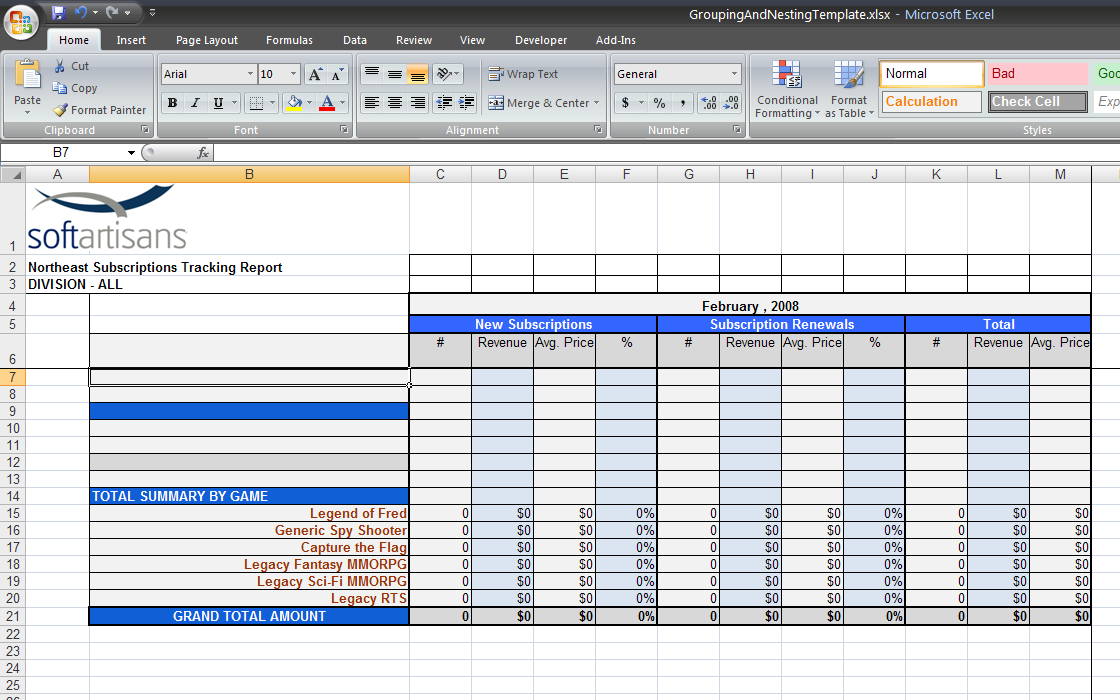
- In the template worksheet, create a data marker row containing the fields you wish to bind to the template. In this case, a (hide) data marker modifier is added to the %%=Data.Region data marker so the grouping values are not repeated for every row of data. Additionally, several of the cells of this row have formulas that references cells within the row.
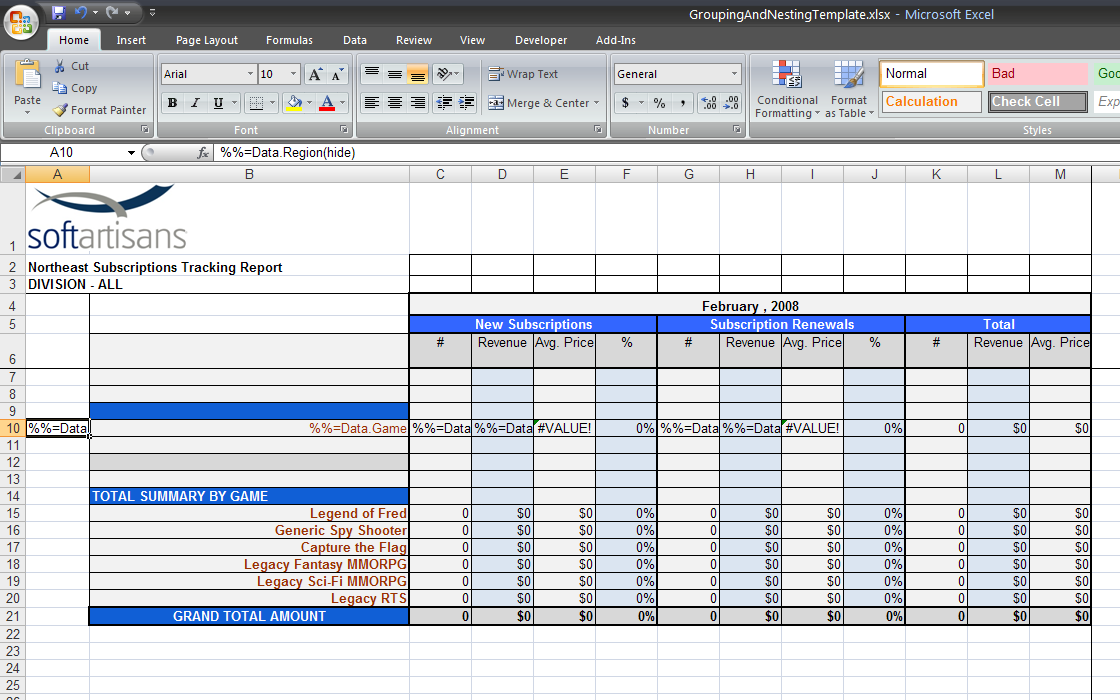
- In a row above the field by which you wish to group, insert a %%group marker to indicate that you are grouping by that field, in this case the Data.Region field.
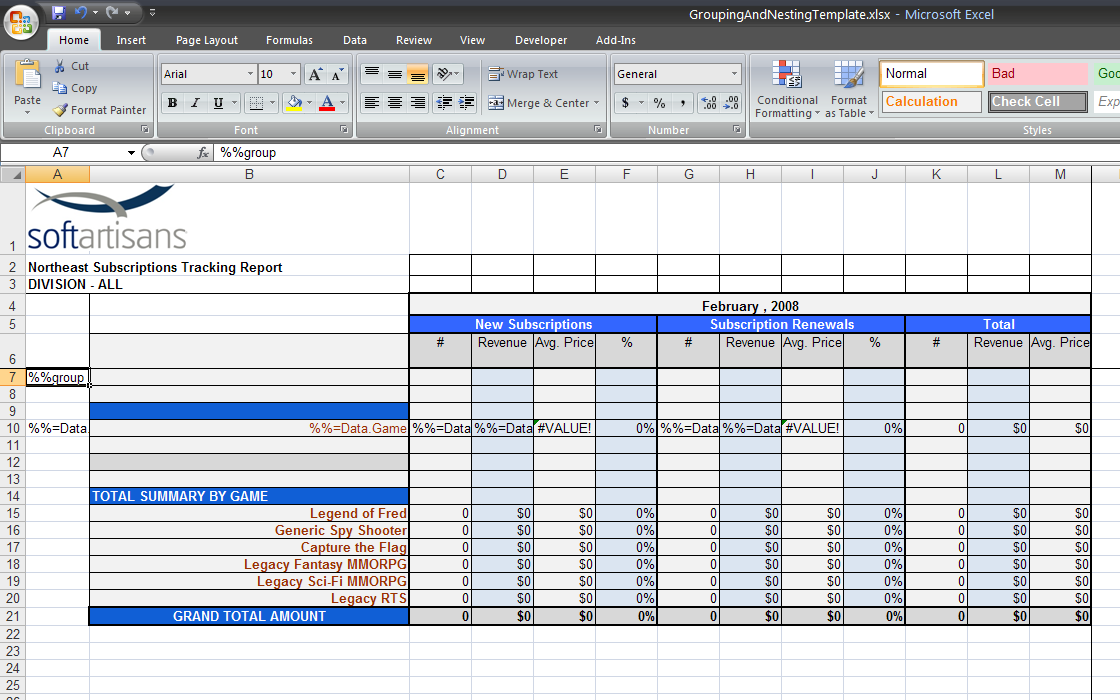
- In the cell directly below the one containing the new %%group marker, place a %%header marker to indicate the beginning of the header rows.
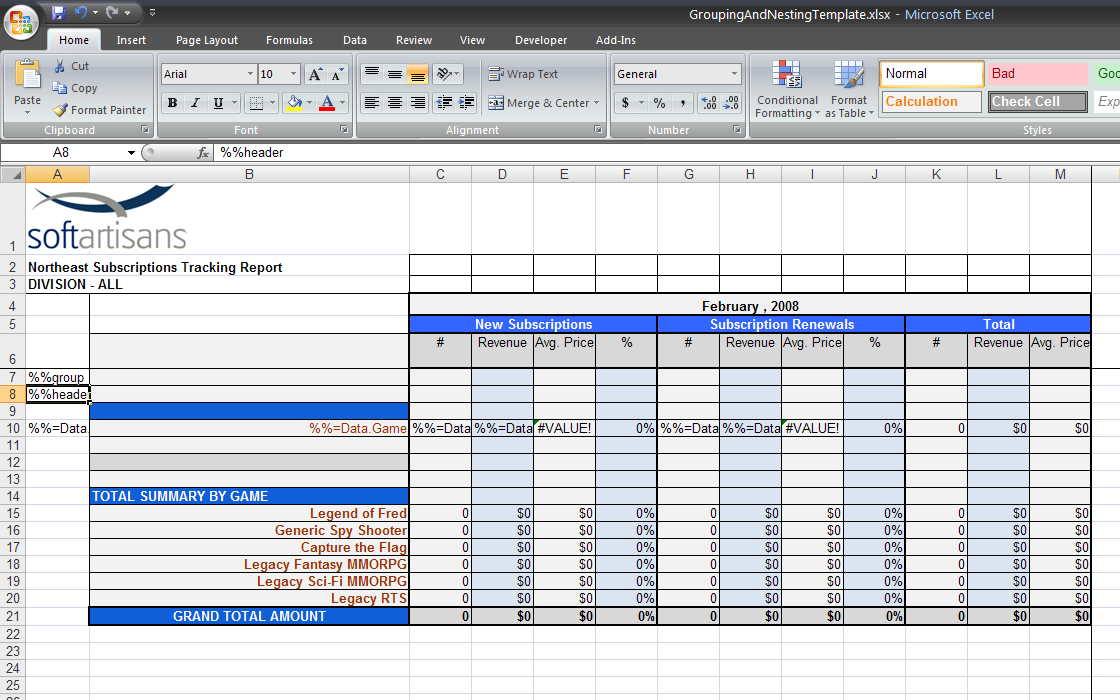
- In the rows between the %%header marker and your data marker row, put content that you wish to see repeated each time there is a new value in the grouping field. In this spreadsheet, the value of the Data.Region is in the header above the rows associated with that region.
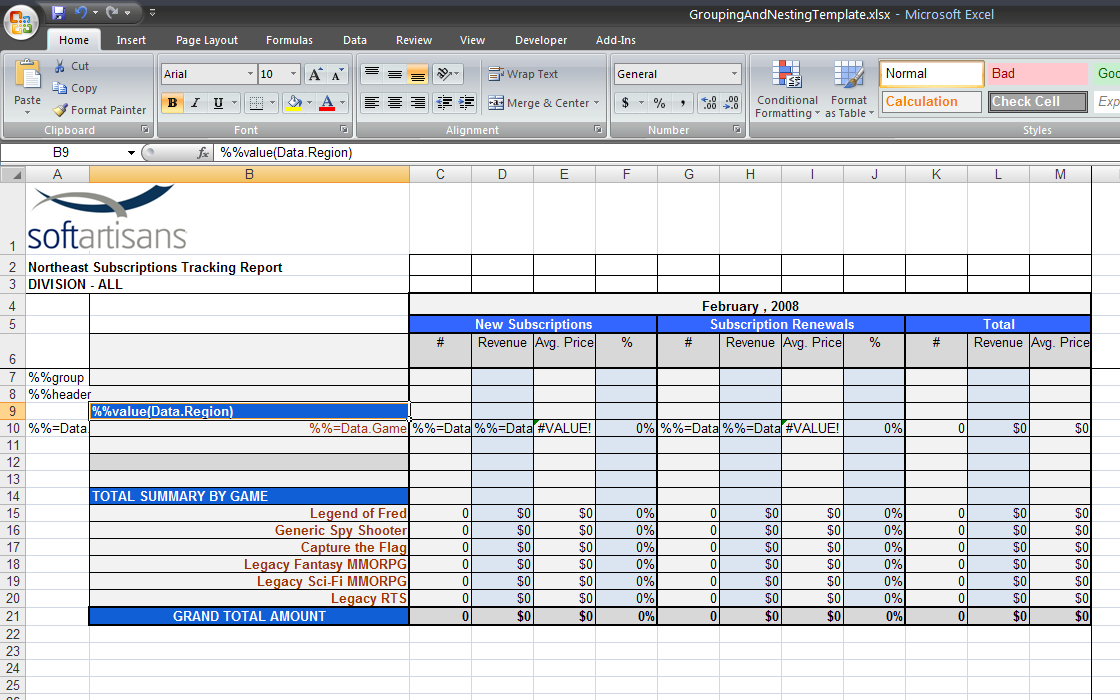
- In the cell directly underneath the grouping field, place a %%footer marker to indicate the beginning of the footer rows.
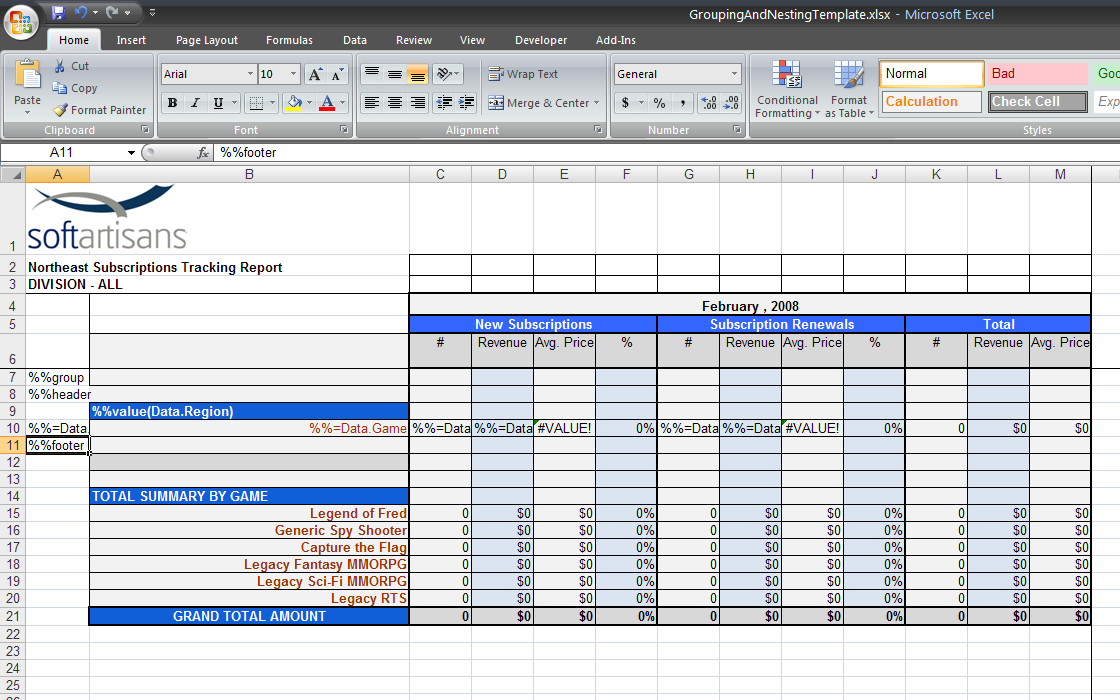
- In the rows under the %%footer marker, put content that you wish to see repeated each time there is a new value in the grouping field. In this case, a subtotal row calculates subtotals for each group.
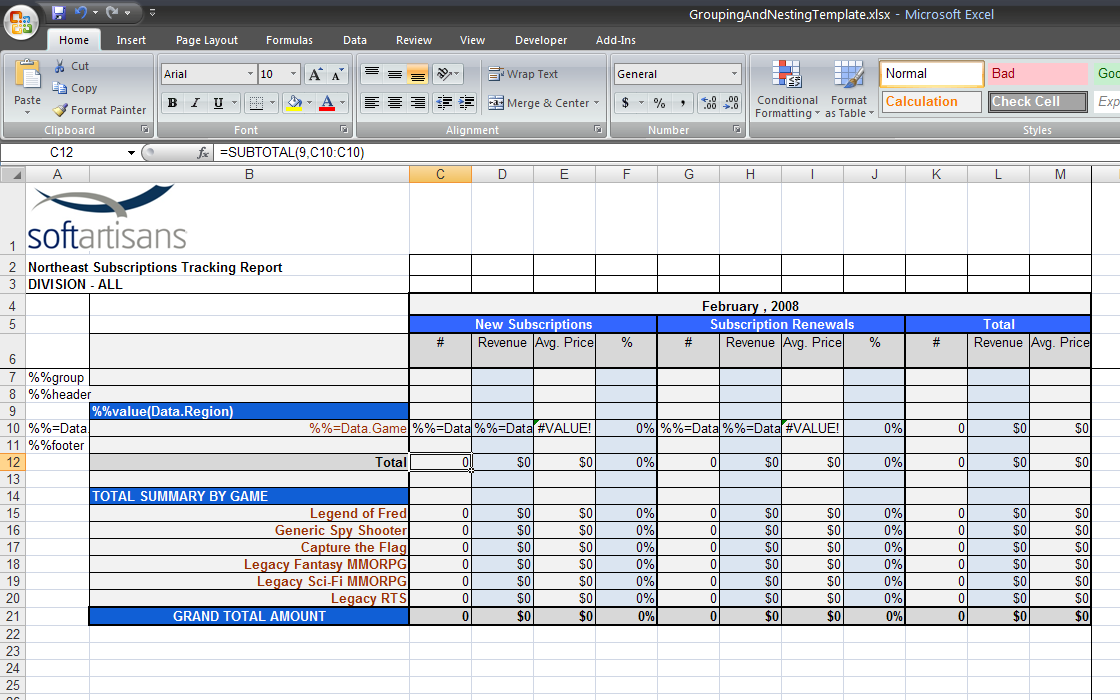
- Under the footer rows, place an %%endgroup marker to indicate the end of the grouping block.
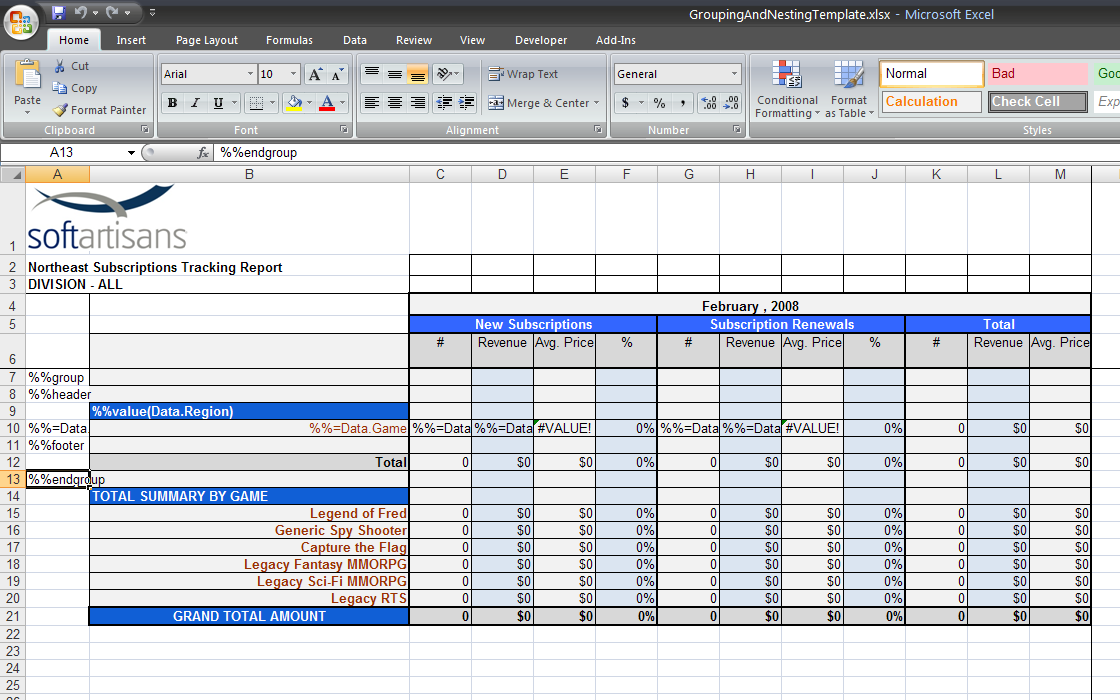
Input Data
Generally, there are few changes that need to be made to data to use ExcelTemplate's Grouping and Nesting functionality. There are some guidelines, however, that you must follow when setting up your data source:
- Data must be presorted in a hierarchic manner. Because the grouping and nesting code essentially removes repeated values from the grouping column, the grouping column values can be repeated if the data are not already sorted.
- Data must be in a flat format – that is, there should be a value in every row and column of the input data set.
Data Binding Code
Bind data to a grouping block just as you would group it to a normal data marker row. Use the ExcelTemplate.BindData() method to bind the data to the spreadsheet. The following code opens a spreadsheet with a grouping block, creates a DataSet from an XML file, binds the DataSet to the template, then processes the file and streams it to the user.
| Code Block |
|---|
private void GenerateReport()
{
//--- Create a new ExcelTemplate object and open a template file
//--- (Office Open XML format -- .xlsx) containing grouping data markers
ExcelTemplate xlt = new ExcelTemplate();
xlt.Open(Server.MapPath("templates/GroupingAndNestingTemplate.xlsx"));
//--- Create a flat data source, sorted based on the grouping categories
DataSet ds = new DataSet();
ds.ReadXml(Server.MapPath("VideoGameData.xml"), XmlReadMode.ReadSchema);
//--- Bind the data to the template file and send the resulting file
//--- to the client. Office Open XML (.xlsx) format must be used.
xlt.BindData(ds, "Data", xlt.CreateDataBindingProperties());
xlt.Process();
xlt.Save(Page.Response, "GroupingAndNesting.xlsx", false);
}
{code}
h2. Output file
Below are shown the first few groups from the output file. Notice that the group, header, footer, and endgroup marker rows are not shown in the output file, while the hidden Data.Region column data is also removed.
!output1.png!
h2. Formatting Options
ExcelWriter's Grouping and Nesting formatting is flexible enough to allow for a variety of different layouts. The *%%group*, *%%header*, and *%%footer* markers must be in the same column as the data column you wish to group, but there is no restriction for where that column must be. If you'd like to put the group data directly below the header with the grouping column value, you can simply put the grouping column on the right side of the data:
!endgroup.png!
The grouping markers will be removed, and the *(hide)* data marker modifier tells ExcelTemplate to remove the grouping column data as well, so that we do not repeat the values:
!output.png!
{scrollbar} |
Output file
Below are shown the first few groups from the output file. Notice that the group, header, footer, and endgroup marker rows are not shown in the output file, while the hidden Data.Region column data is also removed.
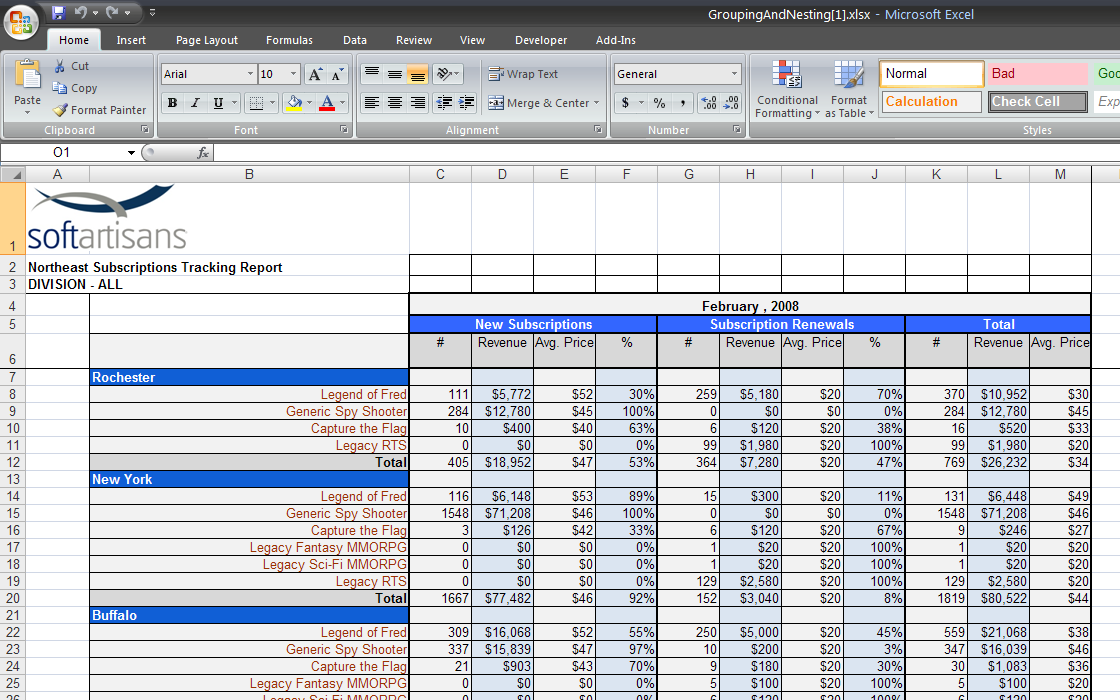
Formatting Options
ExcelWriter's Grouping and Nesting formatting is flexible enough to allow for a variety of different layouts. The %%group, %%header, and %%footer markers must be in the same column as the data column you wish to group, but there is no restriction for where that column must be. If you'd like to put the group data directly below the header with the grouping column value, you can simply put the grouping column on the right side of the data:
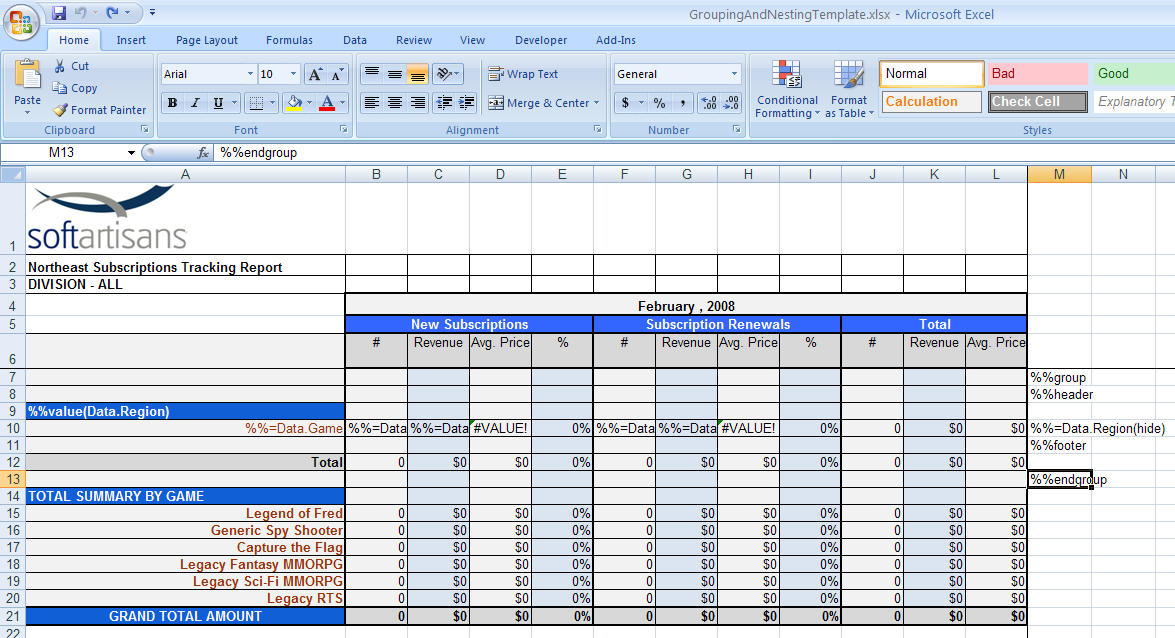
The grouping markers will be removed, and the (hide) data marker modifier tells ExcelTemplate to remove the grouping column data as well, so that we do not repeat the values:
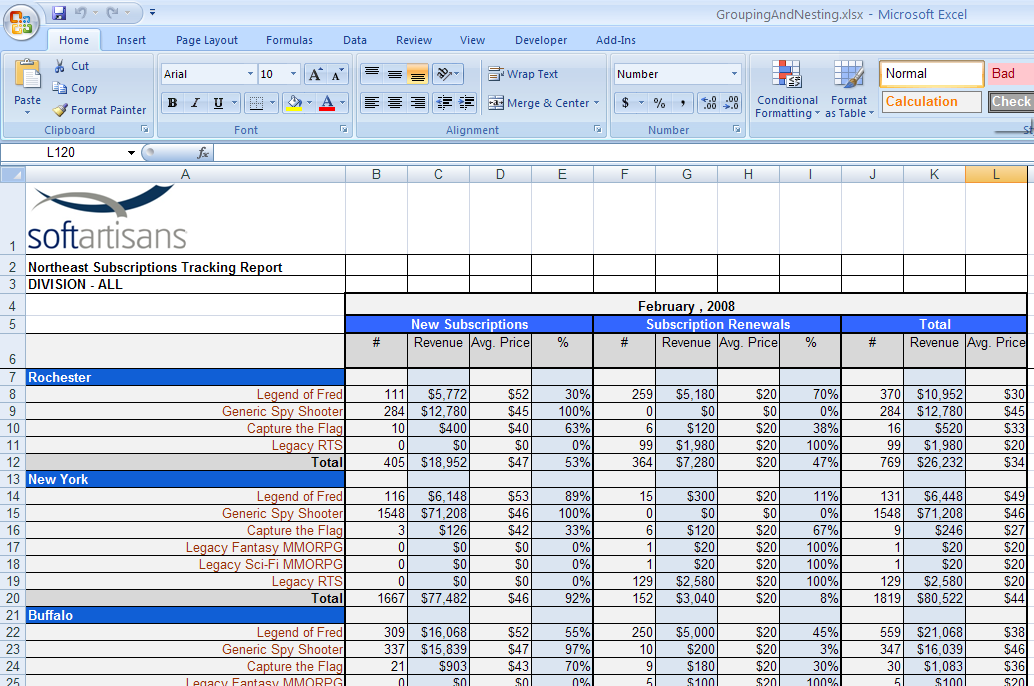
| Scrollbar |
|---|